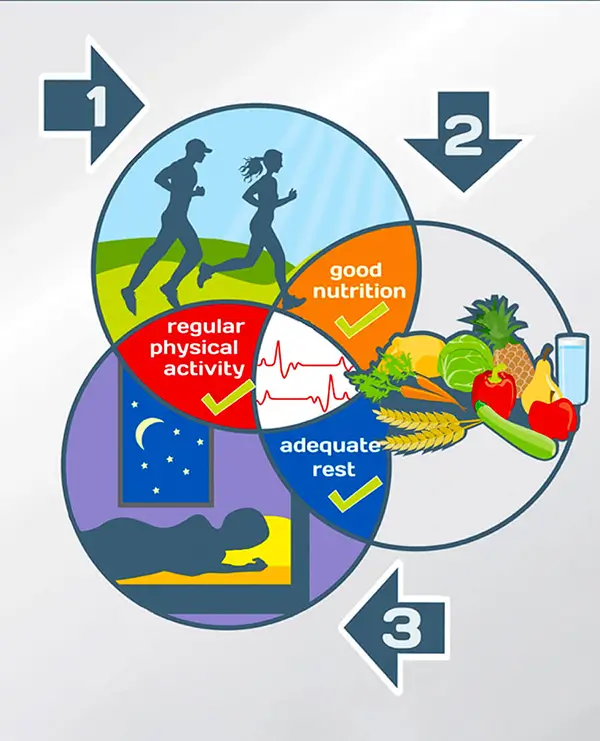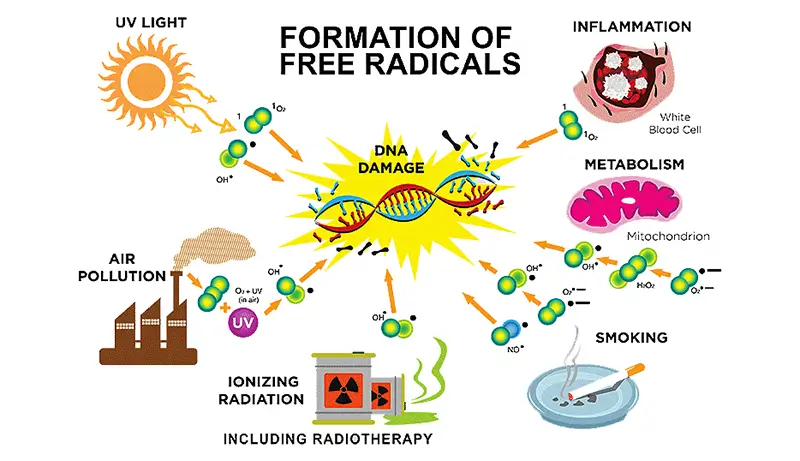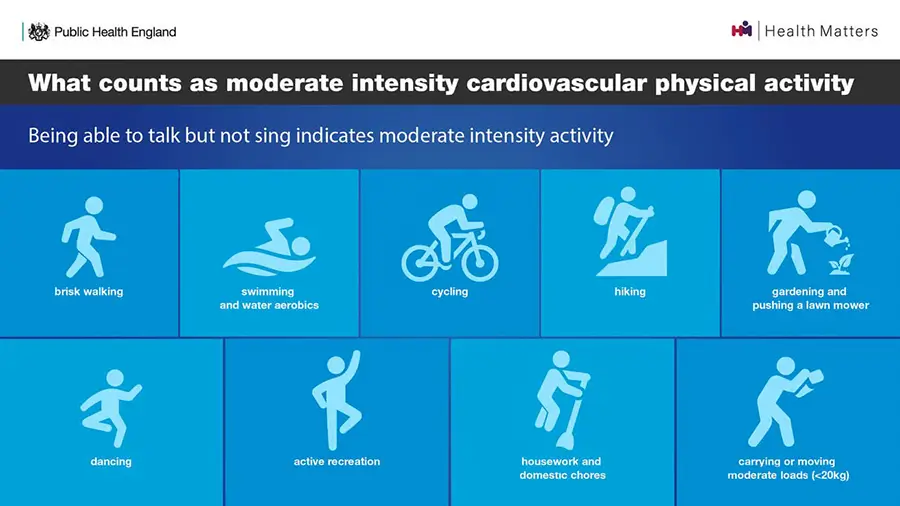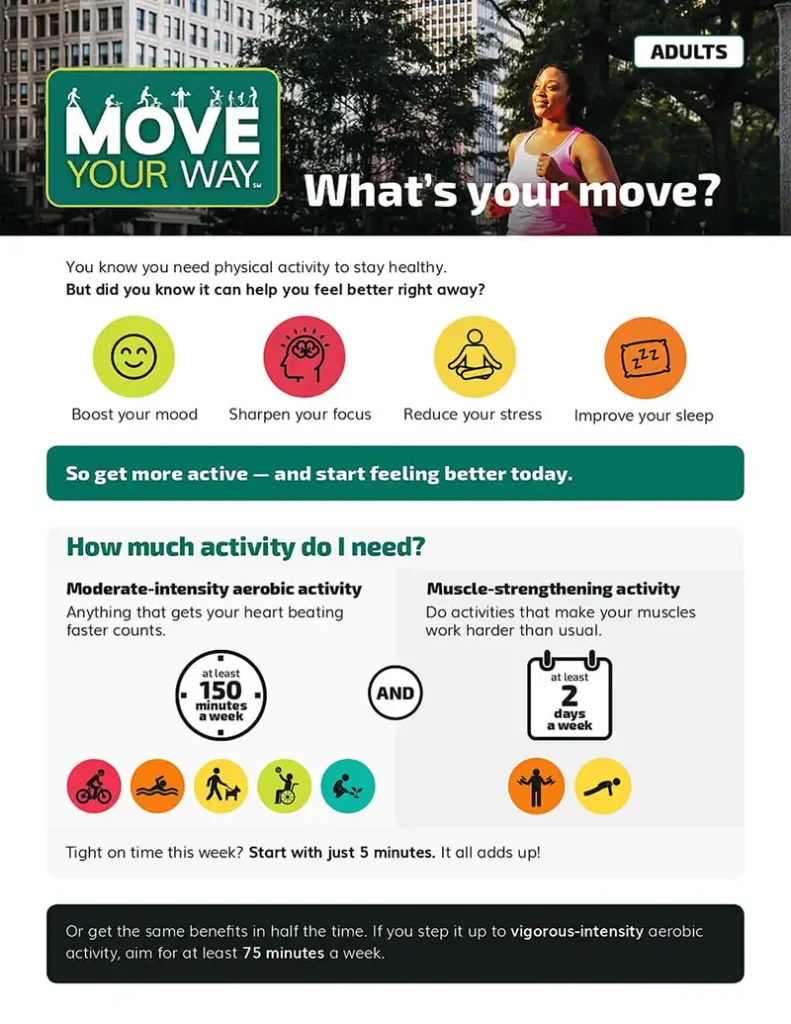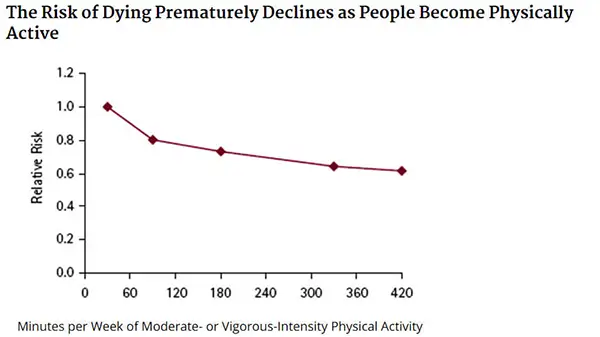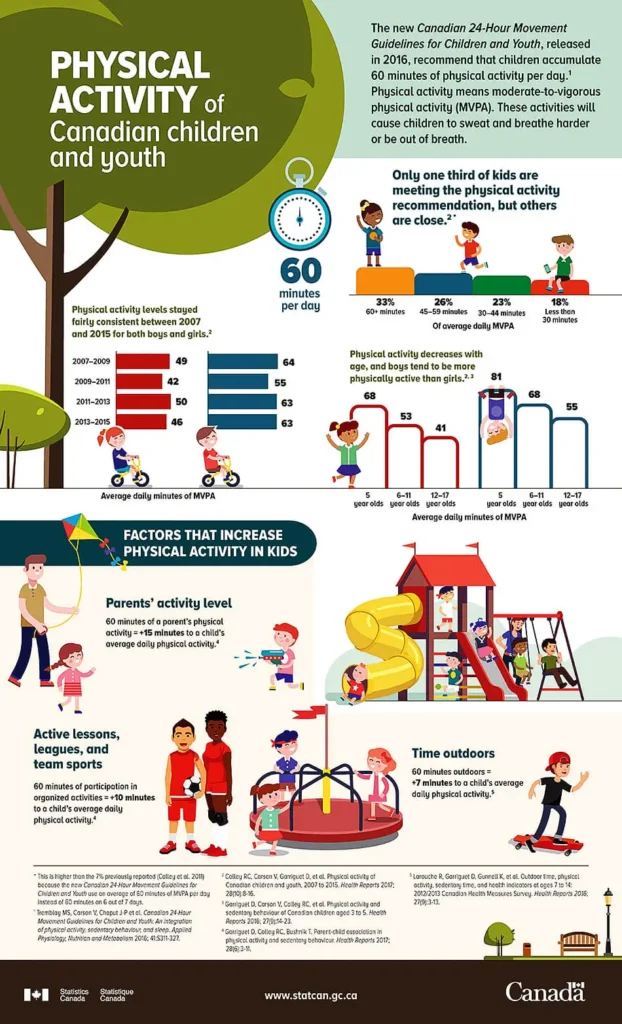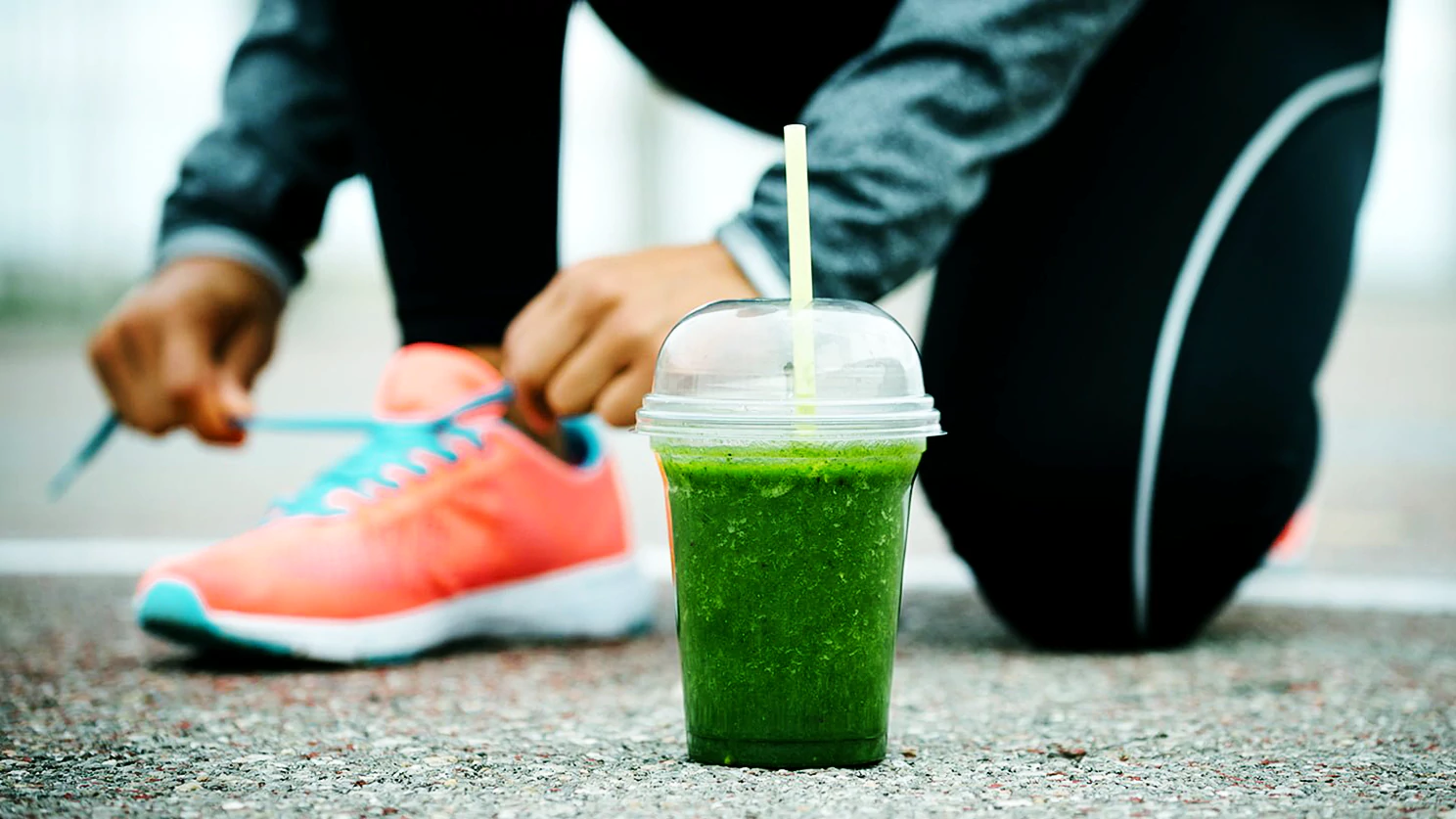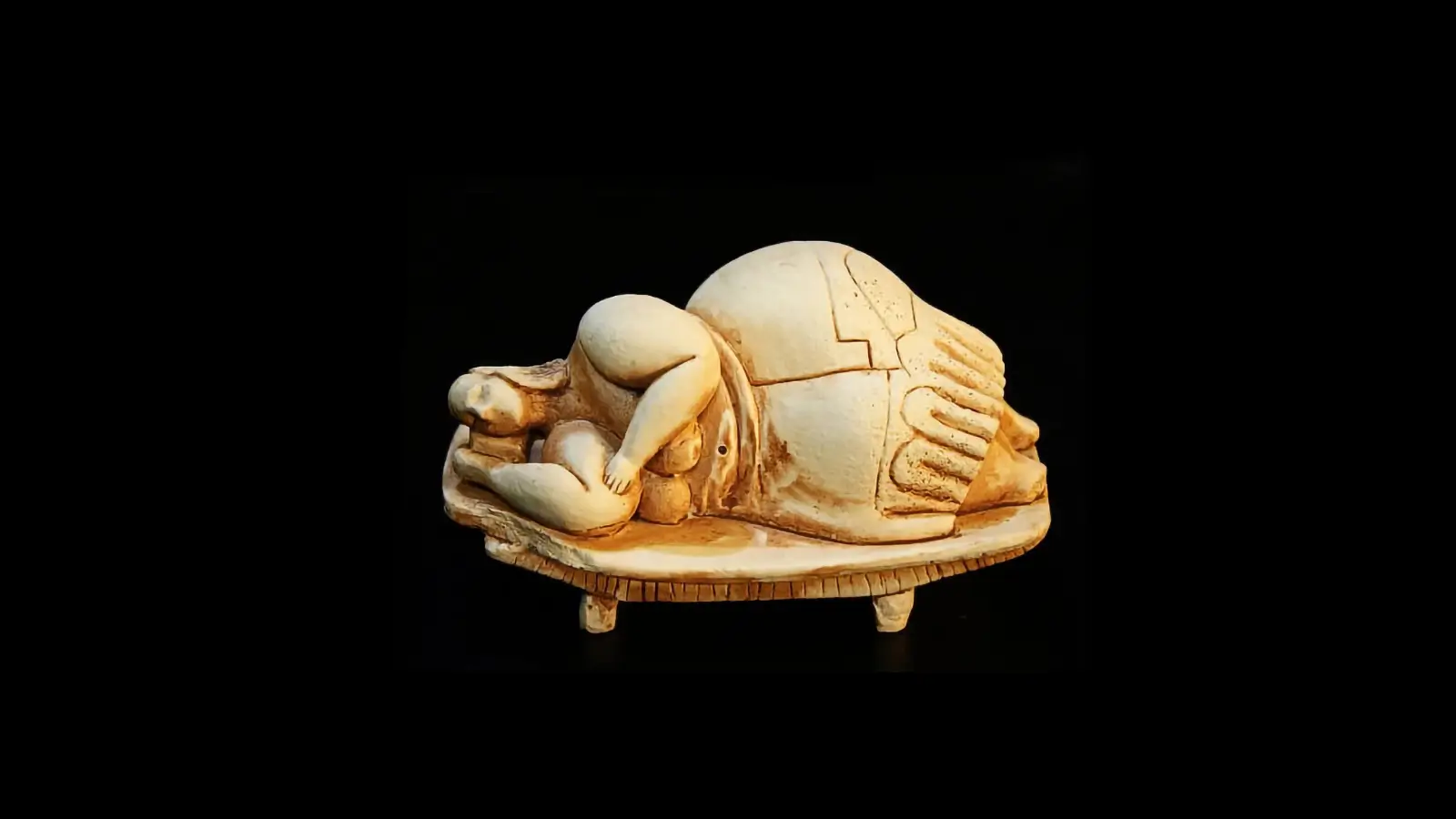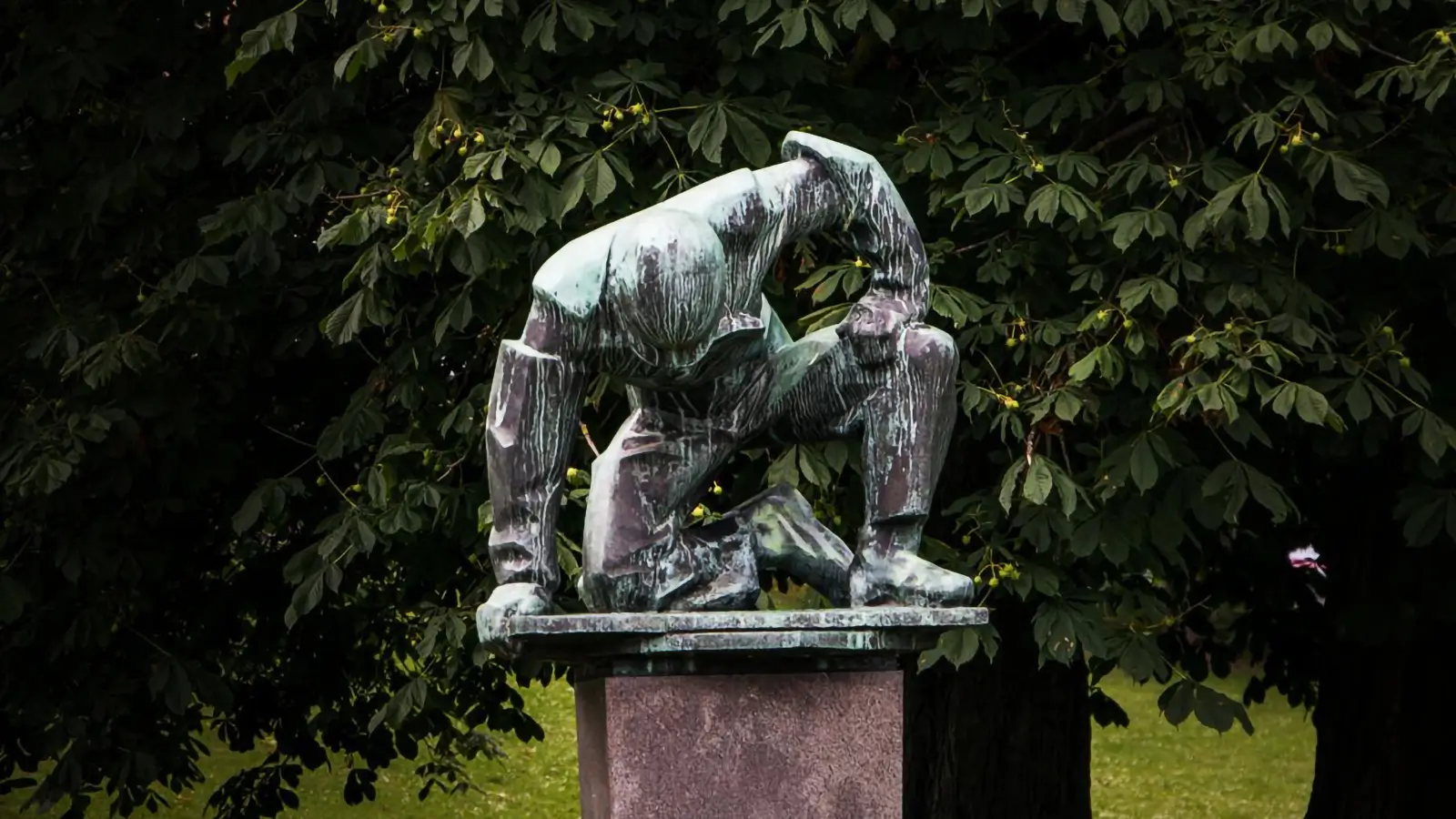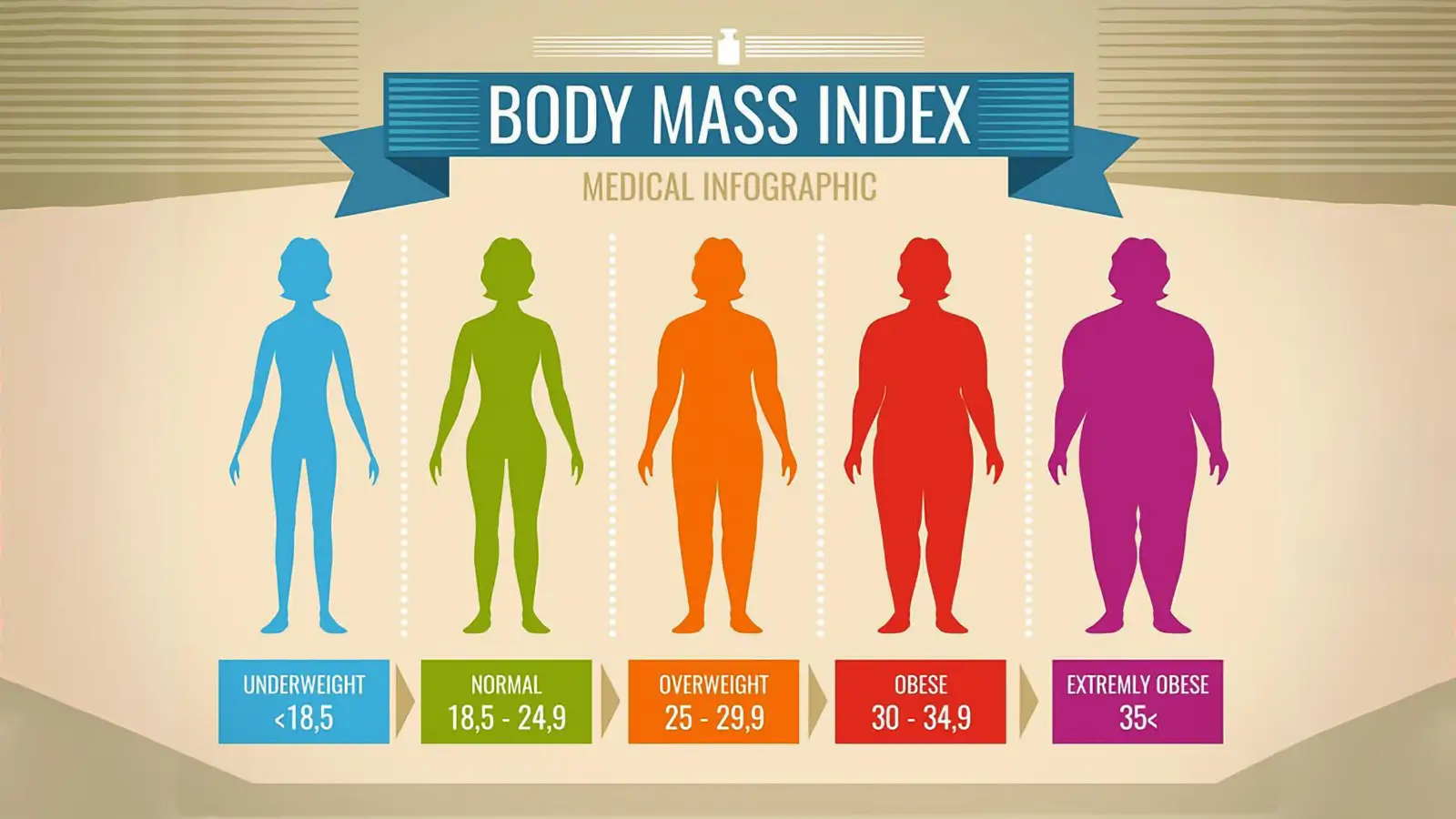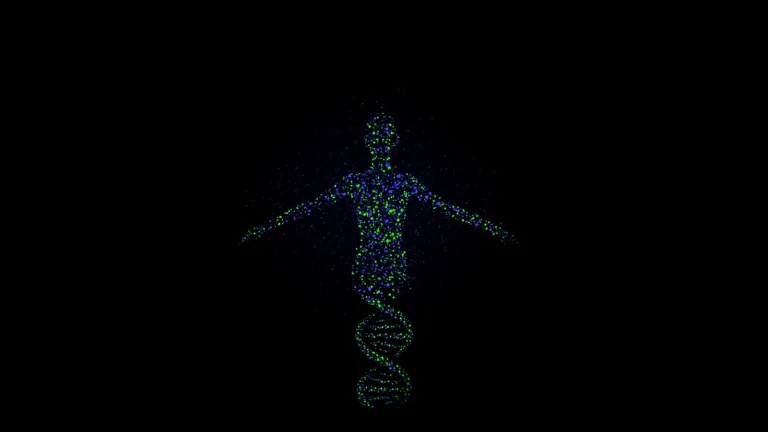Exercise- Why exactly do we need it?
In the health community, exercise has almost a mythical status as one of the best things you can do for yourself except for avoidance of smoking.
Milos Pokimica
Written By: Milos Pokimica
Medically Reviewed by: Dr. Xiùying Wáng, M.D.
Updated June 9, 2023We all know that training or exercise of any sort is healthy for us. Medical doctors like to talk a lot about prevention and a big part of prevention will come down to exercise, weight management, and refined food avoidance. It is so important that we have physical activity in schools. We have different kinds of sports. We have soccer and basketball professional leagues for watching in leisure time, even the Olympic Games. We glorify professional athletes as role models for our children. Even our dog gets agitated if he does not receive his daily dose of walking.
In health, community exercising has almost a mythical status as one of the best things you can do for yourself except to avoidance of smoking. In reality, when we look at scientific data diet is the number one killer and most important health intervention. Only after diet, there are other risk factors associated with physical inactivity and bad habits like smoking.
Pushing the belief that physical inactivity is the biggest public health problem of the 21st century is not completely truthful.
Physical inactivity barely makes it in the top ten leading causes of death in the world. Diet is number one and smoking is number two. This doesn’t mean however that exercise is not important. It just means that there are more important lifestyle changes that are affecting the quality of life in a more severe way.
Diet is absolutely number one. The problem we have is that food is an addictive substance and dietary habits cannot be so easily changed. People would just refuse to change their behavior. Exercise is pushed as a holy grail for that one reason. People are addicted to food and exercise unlike dieting can create a lot of profit from professional sports to supplements. There isn’t much money to be made out of carrots.
Promoting a whole food plant-based diet is everything except a money-making machine. Big pharma is a big business and so is the supplement industry. Exercise is a cost-effective and proven way to reduce mortality. Cost-effective means it does not lower the profits of existing businesses and most importantly a way that people can accept. This doesn’t mean that it is not as important as a preventive measure. In real life, it will provide a substantial benefit. And yes we all should exercise.
By why?
That is the first question we should know. Well, it is not because exercise itself is healthy. It is a stressful, painful experience full of sweat and the possibility of injuries that increases oxidative stress and leads to the creation of free radical DNA damage. There are no animal species in nature that likes to “exercise”. There is nothing romantic in hunting or foraging for food. It is an existential necessity that is forced. When we exercise what we essentially are doing is that we are simulating an environment in which our ancestors have evolved. It is a form of self-inflicted pain. Pain that just by itself is not healthy and will create DNA damage due to the excessive production of free radicals due to increased oxygen consumption.
If free radicals damage DNA and exercise leads to the creation of free radicals then how can it be that physical activity can be healthy?
It is because our hominin ancestors lived by foraging. That created evolutionary adaptations in our biology. Physical activity was an essential component of their survival. You do not forage, you do not find food, and you die. It is that simple. The only reason exercise is healthy is because in a million years of evolution our body adapted to it. Our body expects it as a normal part of life.
When we do not exercise we are out of balance with our physiology, and when we do, we give our bodies what they are expecting. When we go to the gym or do any other exercise like running on the treadmill, what we are doing is that we are simulating the conditions in the habitat of our hominin ancestors.
When we look for scientific research about exercise, what will we find? Does exercise matter or it is just something to help us lose weight more rapidly? What we find is that individuals with low levels of physical activity are at higher risk of many different kinds of diseases like heart disease, cancer, Alzheimer’s disease, and also early death by any cause. Long before that, inactivity increase lower-back pain worsens arthritis symptoms and leads to anxiety. Exercise can help with lowering the risk of early death, high blood pressure, stroke, coronary heart disease, adverse blood lipid profile, type 2 diabetes, metabolic syndrome, colon cancer, breast cancer, depression, and can increase cognitive and mental health, sleep quality, immune system function and longevity.
There are a couple of main benefits of physical activity. The first and main one will be its effects on the cardiovascular system. You are probably doing to do some “cardio” in the gym.
When we exercise, the heart starts to contract forcefully and frequently. That will increase blood flow through the arteries and allow our muscles to use more oxygen. An increase in blood flow will cause subtle changes in the autonomic nervous system, which controls the contraction and relaxation of these vessels. This adaptation leads to lowering blood pressure, a more variable heart rate meaning the ability of the heart to slow down or increase contractions when needed and a lower resting heart rate overall which means increased efficacy of the cardiovascular system with fewer beats to pump blood through the body. All aspects have an impact on lowering cardiovascular disease.
Exercise also lowers inflammation associated with the cardiovascular system. Exercise in research was able to cause around a 30 percent dip in C-reactive protein levels, a marker of inflammation. Thirty percent drop is about the same drop that statin (the cholesterol drug) is able to cause. It beefs up the body’s immune system and wards off cancer and other diseases.
One of the main benefits will also be an increase in insulin sensitivity. When someone runs, muscle contractions will increase the production of adenosine monophosphate-activated protein kinase (AMPK). This is an enzyme that promotes the breakdown of fats that can interfere with the cell’s glucose transporters. AMPK can help in preventing type 2 diabetes.
Research in rats shows that physical exercise boosts BDNF (brain-derived neurotrophic factor). BDNF is an essential factor in learning and memory. BDNF helps rats to remember how to navigate their way through mazes, and similar activity can be assumed in humans.
Exercise will help to maintain bone mass and will reduce the risk of osteoporosis. Bones become stronger when forced to adapt to bear more weight than usual.
The Department of Health and Human Services (HHS) monitors this kind of research and releases periodically its Physical Activity Guidelines for Americans. Recommendations are that:
“Adults between the ages of 18 and 64 exercise moderately (walking) for at least two hours and 30 minutes or vigorously (running, swimming, or cycling ten mph or faster) for at least an hour and 15 minutes weekly”.
That is about 11 minutes of running a day on the treadmill. For people who do not understand how to read this kind of release, the keyword is for at least. The more is better. They are recommending what they think may be achievable. When we look at their charts of the correlation between exercise and premature death all we can see is just a steady linear drop.
If we exercise 180 minutes a week, we will have a 27% lower risk but if we exercise 420 minutes a week will have a 38.5% lower risk, and this kind of correlation is found in all studies and systematic reviews and meta-analyses of cohort studies. In one study (Mok et al., 2019) they reviewed 22 studies that met inclusion criteria. A study containing 977,925 individuals (334,738 men and 643,187 women) and found that 2.5h/week (equivalent to 30min daily for 5 days a week) compared with no activity was correlated with a decrease in mortality risk of 19%, while 7h/week of moderate activity compared with no activity reduced the mortality risk by 24%.
The conclusion was that:
“Being physically active reduces the risk of all-cause mortality.”
Going from no activity to a small amount was found to provide the most significant amount of benefit.
However, that does not mean that if we are active that there is no additional benefit. Even at high levels of activity benefits still, accrue from the additional activity. The more and the longer the exercise, the more benefits.
References:
- Mok, A., Khaw, K., Luben, R., Wareham, N. J., & Brage, S. (2019). Physical activity trajectories and mortality: population based cohort study. BMJ, l2323. https://doi.org/10.1136/bmj.l2323
- Arem, H., Moore, S. C., Patel, A., Hartge, P., Berrington de Gonzalez, A., Visvanathan, K., Campbell, P. T., Freedman, M., Weiderpass, E., Adami, H. O., Linet, M. S., Lee, I. M., & Matthews, C. E. (2015). Leisure time physical activity and mortality: a detailed pooled analysis of the dose-response relationship. JAMA internal medicine, 175(6), 959–967. https://doi.org/10.1001/jamainternmed.2015.0533
- Woodcock, J., Franco, O. H., Orsini, N., & Roberts, I. (2011). Non-vigorous physical activity and all-cause mortality: Systematic review and meta-analysis of cohort studies. International Journal of Epidemiology, 40(1), 121-138. https://doi.org/10.1093/ije/dyq104
Related Posts
Do you have any questions about nutrition and health?
I would love to hear from you and answer them in my next post. I appreciate your input and opinion and I look forward to hearing from you soon. I also invite you to follow us on Facebook, Instagram, and Pinterest for more diet, nutrition, and health content. You can leave a comment there and connect with other health enthusiasts, share your tips and experiences, and get support and encouragement from our team and community.
I hope that this post was informative and enjoyable for you and that you are prepared to apply the insights you learned. If you found this post helpful, please share it with your friends and family who might also benefit from it. You never know who might need some guidance and support on their health journey.
– You Might Also Like –

Learn About Nutrition
Milos Pokimica is a doctor of natural medicine, clinical nutritionist, medical health and nutrition writer, and nutritional science advisor. Author of the book series Go Vegan? Review of Science, he also operates the natural health website GoVeganWay.com
Medical Disclaimer
GoVeganWay.com brings you reviews of the latest nutrition and health-related research. The information provided represents the personal opinion of the author and is not intended nor implied to be a substitute for professional medical advice, diagnosis, or treatment. The information provided is for informational purposes only and is not intended to serve as a substitute for the consultation, diagnosis, and/or medical treatment of a qualified physician or healthcare provider.NEVER DISREGARD PROFESSIONAL MEDICAL ADVICE OR DELAY SEEKING MEDICAL TREATMENT BECAUSE OF SOMETHING YOU HAVE READ ON OR ACCESSED THROUGH GoVeganWay.com
NEVER APPLY ANY LIFESTYLE CHANGES OR ANY CHANGES AT ALL AS A CONSEQUENCE OF SOMETHING YOU HAVE READ IN GoVeganWay.com BEFORE CONSULTING LICENCED MEDICAL PRACTITIONER.
In the event of a medical emergency, call a doctor or 911 immediately. GoVeganWay.com does not recommend or endorse any specific groups, organizations, tests, physicians, products, procedures, opinions, or other information that may be mentioned inside.
Editor Picks –
Milos Pokimica is a doctor of natural medicine, clinical nutritionist, medical health and nutrition writer, and nutritional science advisor. Author of the book series Go Vegan? Review of Science, he also operates the natural health website GoVeganWay.com
Latest Articles –
Plant Based News
-
8 Vegan Smoothie Bowl Breakfasts
on June 27, 2025
-
How To Make A Vegan Version Of The Viral M&S Strawberry And Cream Sandwich
on June 27, 2025
-
RFK Jr Implied Bacon Isn’t Processed – Is He Right?
on June 27, 2025
-
‘I Tried A Vegan Afternoon Afternoon Tea In London – Here’s What It Was Like’
on June 27, 2025
-
Easy Red Lentil Dhal
on June 27, 2025
-
Roasted Aubergine Salad
on June 26, 2025
-
Cardamom Pistachio Ice Cream (Dairy-Free And Vegan)
on June 26, 2025
Top Health News — ScienceDaily
- Parkinson’s may begin decades earlier — and your immune system might know firston June 27, 2025
Misbehaving T cells light up long before Parkinson’s symptoms show, zeroing in on vulnerable brain proteins. Their early surge could double as an alarm bell and a target for stop-it-early treatments.
- AI sees what doctors miss: Fatty liver disease hidden in chest x-rayson June 27, 2025
Researchers in Japan created an AI that can detect fatty liver disease from ordinary chest X-rays—an unexpected and low-cost method that could transform early diagnosis. The model proved highly accurate and may offer a fast, affordable way to flag this silent but serious condition.
- Acid-busting diet triggers 13-pound weight loss in just 16 weekson June 26, 2025
Swap steaks for spinach and you might watch the scale plummet. In a 16-week crossover study, overweight adults who ditched animal products for a low-fat vegan menu saw their bodies become less acidic and dropped an average of 13 pounds—while the Mediterranean diet left weight unchanged. Researchers link the shift to lower “dietary acid load,” a hidden inflammation trigger driven by meat, eggs, and cheese.
- Hot tubs outperform saunas in boosting blood flow and immune poweron June 26, 2025
Hot tubs don’t just feel great, they may actually outperform saunas when it comes to health perks. A study found that soaking in hot water raises core body temperature more than dry or infrared saunas, triggering stronger heart, blood vessel, and immune responses.
- Scientists reveal your morning coffee flips an ancient longevity switchon June 26, 2025
Caffeine appears to do more than perk you up—it activates AMPK, a key cellular fuel sensor that helps cells cope with stress and energy shortages. This could explain why coffee is linked to better health and longer life.
- Scientists warn of bat virus just one mutation from infecting humanson June 25, 2025
Viruses closely related to the deadly MERS coronavirus are lurking in bats and one group, known as HKU5, may be just one mutation away from making the jump to humans. A new study reveals how these viruses bind to cell receptors and even shows signs of adapting to human-compatible versions of those receptors.
- The brain’s sweet spot: How criticality could unlock learning, memory—and prevent Alzheimer’son June 25, 2025
Our brains may work best when teetering on the edge of chaos. A new theory suggests that criticality a sweet spot between order and randomness is the secret to learning, memory, and adaptability. When brains drift from this state, diseases like Alzheimer s can take hold. Detecting and restoring criticality could transform diagnosis and treatment.
PubMed, #vegan-diet –
- Micronutrient intake and nutritional status in 16-to-24-year-olds adhering to vegan, lacto-ovo-vegetarian, pescatarian or omnivorous diets in Swedenon June 26, 2025
CONCLUSION: Youth, regardless of dietary practice, need support to ensure adequate micronutrient intakes, particularly for vitamin D and selenium. Further research is required to evaluate iodine nutrition in Swedish youth.
- Dietary Patterns and Sustainable Lifestyles: A Multicenter Study from Latin America and Spainon June 26, 2025
Food systems interact through multiple dimensions including food security, nutrition, and planetary health. This study aims to associate different dietary patterns with sustainable lifestyles in Latin America and Spain. This was an observational, analytical, multicenter, cross-sectional survey study, with a total of 6412 participants. A self-administered questionnaire was developed in an online format in the Google Docs interface. The questionnaire was divided into sections: (1) […]
- Integrating comparative genomics and risk classification by assessing virulence, antimicrobial resistance, and plasmid spread in microbial communities with gSpreadCompon June 26, 2025
CONCLUSIONS: The gSpreadComp workflow aims to facilitate hypothesis generation for targeted experimental validations by the identification of concerning resistant hotspots in complex microbial datasets. Our study raises attention to a more thorough study of the critical role of diet in microbial community dynamics and the spread of AMR. This research underscores the importance of integrating genomic data into public health strategies to combat AMR. The gSpreadComp workflow is available at…
- Validation and adaptation of a Turkish version of the dietarian identity questionnaireon June 25, 2025
Dietarian identity reflects an individual’s cognitive, emotional, and behavioral orientation toward the consumption or avoidance of animal-based foods, including red meat, poultry, fish, eggs, and dairy. This study aimed to adapt and validate the Dietarian Identity Questionnaire (DIQ) for Turkish-speaking populations by establishing its cultural and linguistic suitability and examining dietarian identity profiles among different dietary patterns. The DIQ was adapted into Turkish and […]
- Planting Rights and Feeding Freedom: Navigating the Right to a Vegan Diet in Hospitals and Prisonson June 20, 2025
The legal recognition of veganism highlights the evolving landscape of dietary choices and their status under human rights law. This paper examines the legal status of vegan diets under the European Convention on Human Rights (ECHR), focusing on public institutions such as prisons and hospitals. By analyzing the first relevant cases before the European Court of Human Rights, it explores the protection of vegan diets under Articles 9 (freedom of thought, conscience, and religion) and 14…
Random Posts –
Featured Posts –

Latest from PubMed, #plant-based diet –
- Fermented Fruits, Vegetables, and Legumes in Metabolic Syndrome: From Traditional Use to Functional Foods and Medical Applicationsby Karolina Bernacka on June 27, 2025
Fermentation has been used for centuries to preserve food and to obtain products with new, attractive sensory characteristics. Fermented products are a source of dietary fiber, vitamins, bioactive compounds, and probiotic bacteria with health-promoting properties. This review provides a comprehensive overview of the effects of fermented fruits, vegetables, and legumes on metabolic disturbances characterizing metabolic syndrome (MetS). Furthermore, the chemical composition, microbial […]
- A Nationwide Survey of Italian University Students: Exploring the Influences of Sustainable Dietary Behaviors, Lifestyle, and Sociodemographic Factors on Adherence to the Mediterranean Dietby Cinzia Franchini on June 27, 2025
CONCLUSIONS: Future actions are crucial to create a food environment that facilitates healthy and sustainable dietary choices among young adults, such as improving the nutritional quality of processed products and regulating their promotion, as well as implementing initiatives to improve university food services and encourage the use of campus dining facilities.
- Effects of Pork Protein Ingestion Prior to and Following Performing the Army Combat Fitness Test on Markers of Catabolism, Inflammation, and Recoveryby Drew E Gonzalez on June 27, 2025
Tactical athletes and military personnel engaged in intense exercise need to consume enough quality protein in their diet to maintain protein balance and promote recovery. Plant-based protein sources contain fewer essential amino acids (EAAs), while pork loin contains a higher concentration of EAAs and creatine than most other animal protein sources. This study aimed to determine whether the ingestion of plant-based or pork-based military-style meals ready-to-eat (MREs) affects recovery from […]
- Adherence to Mediterranean Diet and Implications for Cardiovascular Risk Preventionby Giulia Frank on June 27, 2025
Background/Objectives:Arterial hypertension, increased carotid intima-media thickness (cIMT), and arterial stiffness (AS) are recognized predictors of cardiovascular disease (CVD). Emerging evidence suggests that vascular remodeling may precede the full development of hypertension. Furthermore, body mass index (BMI), fat mass percentage (FM%), and visceral adipose tissue (VAT), are significant risk factors for cardiovascular events. Conversely, adherence to the Mediterranean diet is […]
- Employing Nutrition to Delay Aging: A Plant-Based Telomere-Friendly Dietary Revolutionby Joanna Polom on June 27, 2025
Telomere attrition is a hallmark of cellular aging, influenced by oxidative stress, chronic inflammation, and metabolic dysregulation. Emerging evidence suggests that dietary patterns rich in plant-based, minimally processed foods may influence telomere dynamics, potentially extending healthspan. This narrative review synthesizes current literature on the molecular mechanisms by which specific nutrients-such as antioxidants, polyphenols, omega-3 fatty acids, and methyl donors-affect telomere…
- Dos and Don’ts in Kidney Nutrition: Practical Considerations of a Panel of Experts on Protein Restriction and Plant-Based Diets for Patients Living with Chronic Kidney Diseaseby Massimo Torreggiani on June 27, 2025
Dietary management is a pillar of chronic kidney disease (CKD) treatment. While some rules are the same as dietary prescriptions for the general population and those suffering from other chronic diseases (energy intake, salt intake, avoidance of ultra-processed food and limited intake of animal fats), in non-dialysis-dependent patients living with CKD, the specific focus is on protein intake. Low-protein diets (LPDs) and supplemented very low protein diets (sVLPDs) have been successfully…
